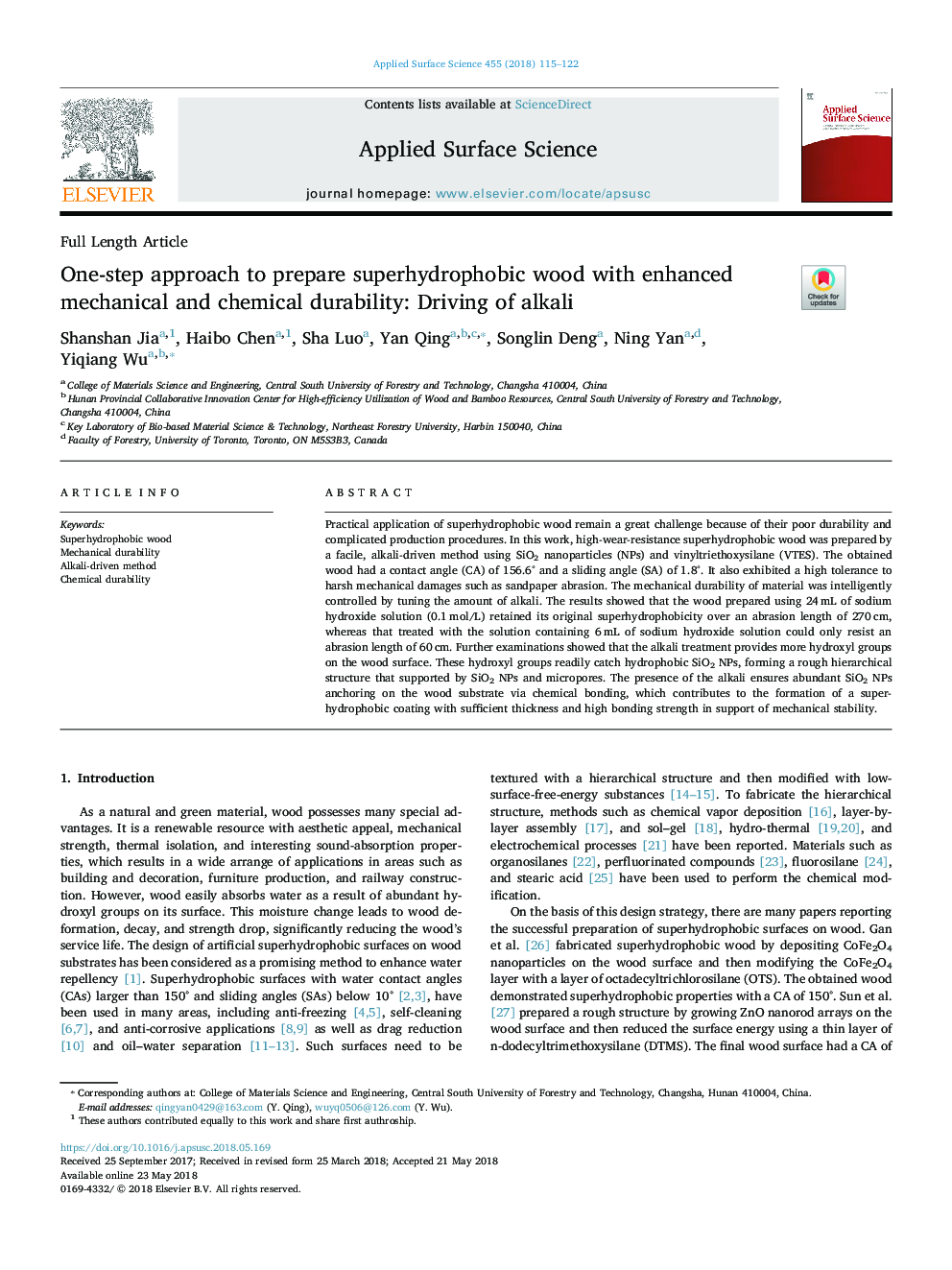| Article ID | Journal | Published Year | Pages | File Type |
|---|---|---|---|---|
| 7833086 | Applied Surface Science | 2018 | 8 Pages |
Abstract
Practical application of superhydrophobic wood remain a great challenge because of their poor durability and complicated production procedures. In this work, high-wear-resistance superhydrophobic wood was prepared by a facile, alkali-driven method using SiO2 nanoparticles (NPs) and vinyltriethoxysilane (VTES). The obtained wood had a contact angle (CA) of 156.6° and a sliding angle (SA) of 1.8°. It also exhibited a high tolerance to harsh mechanical damages such as sandpaper abrasion. The mechanical durability of material was intelligently controlled by tuning the amount of alkali. The results showed that the wood prepared using 24â¯mL of sodium hydroxide solution (0.1â¯mol/L) retained its original superhydrophobicity over an abrasion length of 270â¯cm, whereas that treated with the solution containing 6â¯mL of sodium hydroxide solution could only resist an abrasion length of 60â¯cm. Further examinations showed that the alkali treatment provides more hydroxyl groups on the wood surface. These hydroxyl groups readily catch hydrophobic SiO2 NPs, forming a rough hierarchical structure that supported by SiO2 NPs and micropores. The presence of the alkali ensures abundant SiO2 NPs anchoring on the wood substrate via chemical bonding, which contributes to the formation of a superhydrophobic coating with sufficient thickness and high bonding strength in support of mechanical stability.
Related Topics
Physical Sciences and Engineering
Chemistry
Physical and Theoretical Chemistry
Authors
Shanshan Jia, Haibo Chen, Sha Luo, Yan Qing, Songlin Deng, Ning Yan, Yiqiang Wu,
